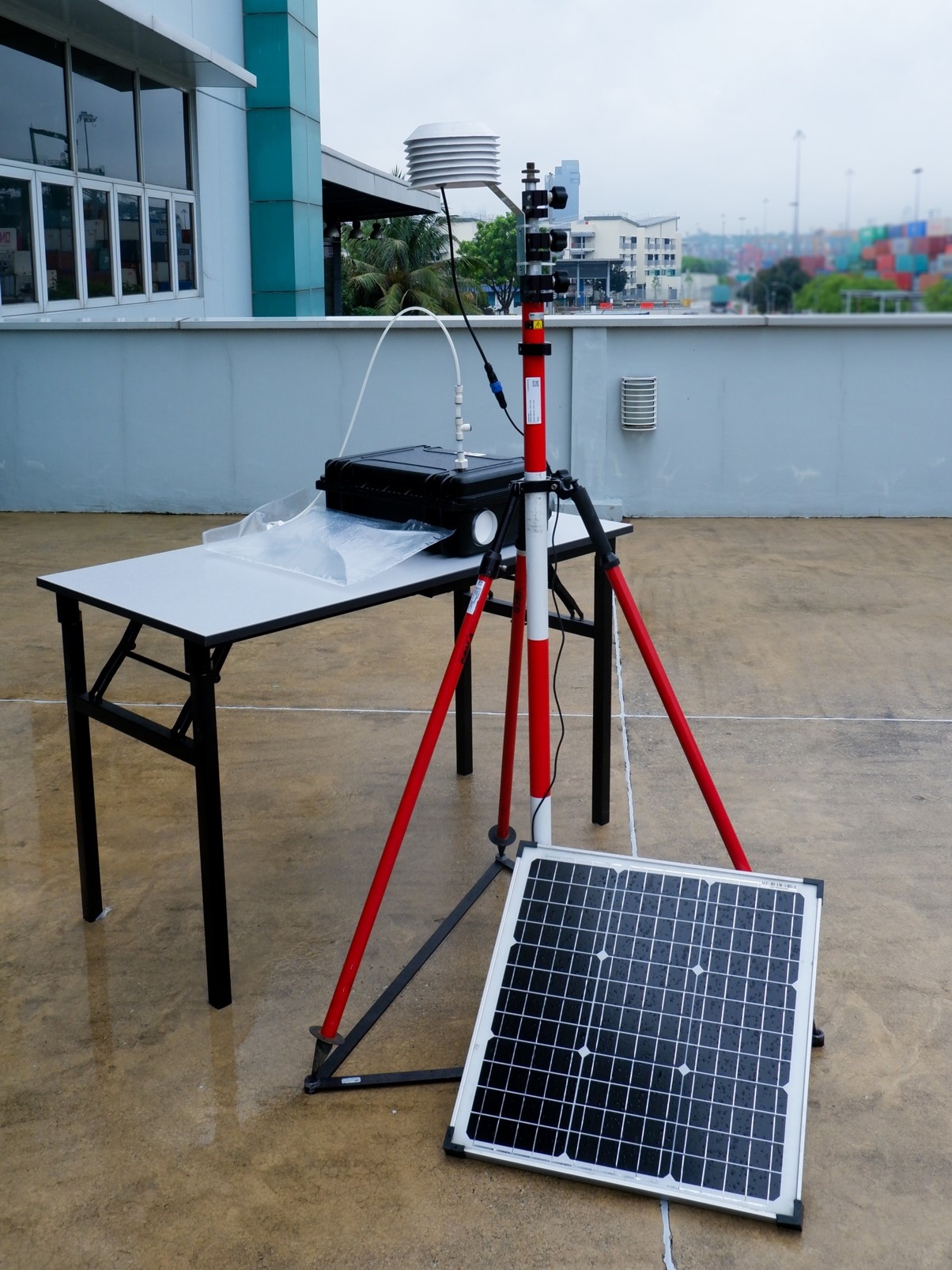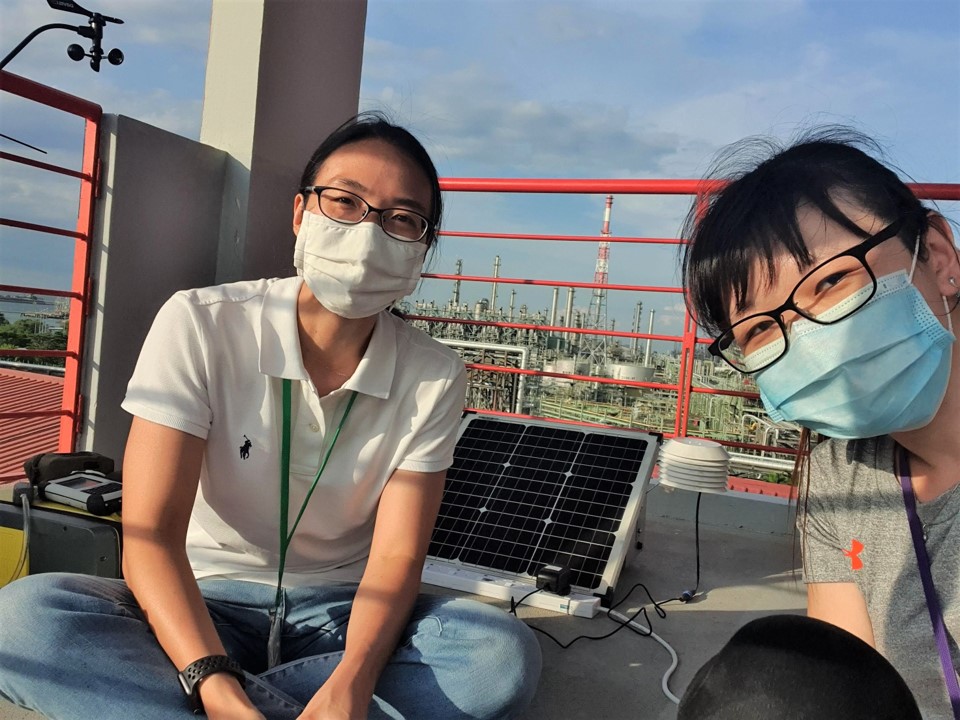You’re sleeping soundly in bed when a strange odour wafts its way through your windows and up your nose. Bleary-eyed, you stagger to the window and poke your head out to take a sniff. Sure enough, there’s something in the air that you can’t quite place. A sense of unease grips you – are you potentially smelling something that could be toxic? You can’t tell – but you know what can? The eNose.
The eNose is an intelligent chemical sensor, tested and further developed by HTX’s CBRNE at SCDF’s request to detect anomalies present in the air. Its name is derived from how it mimics the human nose by sniffing out strange scents, but it is also capable of detecting odourless gases, which the human olfactory system cannot pick up.
SCDF periodically receives calls from the public alerting them to the smell of unknown substances in various parts of Singapore, and responds to these calls by dispatching their monitoring teams to the reported location for further investigation. However, one challenge faced in this operation is that the emission causing the odour could have dissipated or moved to another location due to prevailing wind conditions before SCDF personnel arrive. Considerable time and resources are also required to map the affected areas and trace the source of release.
So how does the eNose deal with these challenges?
The eNose consists of an array of four metal oxide semiconductor sensors, which respond to gases present in the air through a reaction between the gas and the metal oxide surface. Each semiconductor sensor responds differently to each class of chemical compounds.
Upon detecting anomalies in the air, the eNose will alert SCDF of the detection via SMS, prompting SCDF personnel to check a web-based application that shows a map indicating which eNose(s) triggered the alert. The eNose functions 24/7, improving the timeliness of SCDF response as they no longer have to depend solely on information from the public or reports from first responders before taking action, but can rely on instantaneous alerts from the eNose. When deployed as a fixed network, the eNose could also track the development of hazardous material (HazMat) plumes for public protection planning and triangulate the potential source of release.
Moreover, to overcome the problem of emissions being blown away by the wind before SCDF personnel arrive, CBRNE COE is experimenting with incorporating an autosampler to collect air samples when the eNose detects an anomaly in the air quality. Such a
feature would enable SCDF personnel to capture air samples promptly for analysis. The sample can be analysed on-site for a quick response or be brought to the laboratories for more accurate identification. This reduces the workflow duration and allows
for mitigation measures, if any, to be executed in a timelier manner, significantly improving the efficiency of SCDF in responding to anomalies in the air.
But why are anomalies in the air such an important concern?
There are over a hundred global chemical firms with major operations located in Singapore. Many of these companies handle HazMat as part of their manufacturing processes, and these HazMat may be harmful and pose a risk to public safety in the event of an industrial accident. Container ships and tankers that transport cargo, including HazMat, also regularly pass through our water and ports. In the event of a HazMat incident involving chemical release, early detection of chemicals and constant monitoring of the ambient hazard level is extremely important. However, such monitoring operation can be challenging and manpower intensive. eNose can thus serve as an early-warning detection system to safeguard Singapore against toxic threats undetectable by the naked eye – or nose.

eNose unit with solar panel and autosampler. (Photo: HTX)
Together with SCDF, the HTX CBRNE team is currently working on a technical deployment study on how an eNose network could be deployed at strategic locations around Singapore to ensure that the detectors are optimally placed to boost the effectiveness of detection in the event of a chemical incident. “We are envisioning a future with a network of eNose that can aid our first responders to respond efficiently and mitigate chemical threats,” commented May Ong, Director of CBRNE CoE.
Assistant Commissioner (AC) Michael Chua, Director of the Hazardous Materials Department of SCDF, elaborated on this: “HazMat incidents are one of the biggest challenges for SCDF to manage. The island-wide eNose network will bolster our current response capabilities by enabling quicker detection and source identification, as well as more effective monitoring. Ultimately, this will accelerate our mitigation efforts and the implementation of public protective actions.”
So how was the eNose project accomplished?

Dr. Valerie Wong and Li Teng, CBRNE scientists, pictured with the eNose technology (Photo: HTX)
The eNose project certainly wasn’t just done in a breeze. Dr. Valerie Wong, CBRNE scientist, recounts the numerous tests she had to conduct on the eNose technology. “We had to go through a list of chemicals and make sure that the eNose was
actually able to detect when they were present in the air, which was a very time-consuming process. We were only given a very short time to do the lab testing before deployment, so we had to work efficiently as a team.”
Beyond testing the eNose’s capabilities, however, the team also came up with ways to further improve the technology, such as the autosampler that is currently under development. “For me, it was quite intellectually stimulating to think about
how we could tailor the functionality of the eNose to SCDF’s operational needs. We had to work closely together with them to understand their requirements, and see what could be done to improve the eNose.”
For Dr. Valerie, the eNose project in HTX’s CBRNE CoE was a breath of fresh air. “Previously, as part of my studies and prior work, I was focused on more academic research, so this involved a lot more real-world application,” she said.
“Working on this project gave me a chance to apply my knowledge of science and technology in a practical, hands-on manner, which I find very fulfilling. That’s one of the reasons I joined HTX, to challenge myself to do something new, and
apply my passion in science and technology in a meaningful way.”
The people involved in this project are:
Director CBRNE, Ong Bee Leng
CBRNE, Deputy Director of Research, Ngoh Li Ee
CBRNE, 2 Deputy Director of Technology Deployment, Dr Ma Yifei
CBRNE, Head of Technology Deployment, Liang Zhenrong Roger
CBRNE, Senior Scientist, Ng Li Teng
CBRNE, Scientist, Dr Valerie Wong
CBRNE, Scientist, Eunice Chan
CBRNE, Engineer, Dr Sheldon Ho
The eNose was also covered in the Straits Times on 23 August 2021.
Gone with the wind no more: Islandwide eNose network planned to sniff out dangerous gases

![[MEDIA RELEASE] NEA leads scientific team in wastewater surveillance trials for assessment of COVID-19 transmission](/Cwp/assets/htx/images/listing-card-placeholder.png)